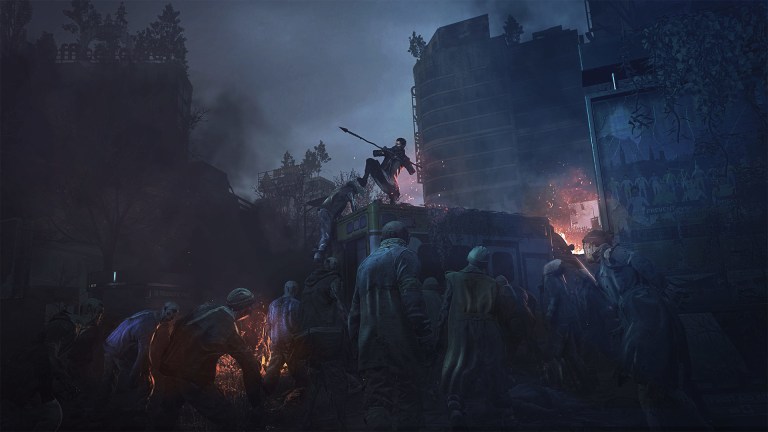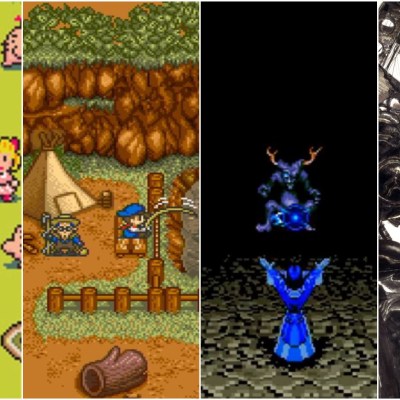Dying Light 2 Shows the Difference Between “Disappointing” and “Bad”
Dying Light 2 falls short of expectations, but you should think carefully before you decide to call this a "bad" game.

Dying Light 2: Stay Human is finally here, and the only thing more epic than this open-world RPG that takes hundreds of hours to properly complete has been the discourse over whether or not this game was worth the wait.
It’s not exactly surprising to see a major new release prove to be divisive, but what’s fascinating in the case of Dying Light 2 is the idea that there seem to be quite a few people out there who just don’t know which words to use to describe how they feel about this game. Even those who have already devoted quite a bit of time to the title usually won’t hesitate to tell you about every one of its problems. Between those conflicted reviews and the straight-up negative ones, it’s easy to understand why you would walk away from the Dying Light 2 discourse under the impression that it’s a simply bad game.
Yet, that’s not the word I would use to describe Dying Light 2. It may seem trivial to argue about which one word best summarizes hundreds of hours of crafted content, but in this case, the distinction between “disappointing” and “bad” could be the distinction that helps determine whether we get more Dying Light (or games like it) at all.
Dying Light 2 Gets Too Much Right to Be Considered a “Bad” Game
While it’s tempting to focus on Dying Light 2’s problems when talking about the game (and we will be having that conversation shortly), it’s important to keep in mind that I do not consider Dying Light 2 to be a “bad” game. In fact, I’m a little disheartened to see that idea come up in some of the reactions to and reviews of the game I’ve seen so far.
“Bad” is obviously a subjective concept, but in recent years, I’ve really come around to the idea that boring is the new bad. At a time of nearly unlimited entertainment options, one of the worst things a piece of entertainment in any medium can do is fail to find a way to stand out or fail to offer any notable level of entertainment value beyond competency and financial success.
That’s a problem we often see in Triple-A gaming where Metacritic averages and lingering investor concerns dominate the creative landscape to such a degree that more and more studios seem afraid to break free of their habits when the success of their previous releases should empower them to at least start exploring beyond the boundaries of what they know is their creative safe zone.
While Dying Light 2 isn’t entirely free of those problems (again, we’ll get there), I was amazed when I booted up the game and was struck with the seemingly obvious realization that it’s exactly the kind of massive RPG that we don’t seem to get enough of any more despite the fact that the older works of studios like BioWare, Obsidian, and Bethesda Game Studios remain some of the most beloved and discussed games of all-time.
On top of that, Dying Light 2 utilizes its predecessor’s fascinating parkour combat and traversal system, which is exactly the kind of idea that you’d expect more developers to experiment with but few often do. Call it fear, disinterest, or concerns over rocking the creative boat a bit too hard, but given how popular the original Dying Light has proven to be in the 7+ years since its release, you’d think we’d have a small army of studios trying to make their own Dying Light follow-ups.
Instead, we have one Dying Light follow-up: Dying Light 2. Whatever else may be said about Dying Light 2, the conversation about it must start with the acknowledgment that it’s a rather unique game (sequel status aside) that offers a massive world, tons of scripted and unscripted activities, and a core gameplay system that must have been a nightmare to put together but offers something truly irreplaceable when the game gets it right (which, moment to moment, it often does).
Calling Dying Light 2 a bad game sends the message that there is something here that is either fundamentally unsatisfying in a way that ensures we never want to see it again or something that is simply so boring that we’re tired of seeing it. Dying Light 2 is neither of those things.
However, Dying Light 2 is certainly a bit of a disappointment.
Dying Light 2’s Technical Problems (Barely) Avoid the Cyberpunk 2077 Situation
While Dying Light 2’s technical problems are certainly a big part of its shortcomings, I can’t agree with those who limit their impressions of the game to its bugs, glitches, or even the ways that its visuals fail to meet expectations set by previews and trailers. I also think that Dying Light 2 manages to (mostly) avoid a Cyberpunk 2077 situation.
There’s no getting around the fact that Dying Light 2 is a buggy game, just as there’s no getting around the fact that its visuals showcase the project’s trip through development hell and the compromises made along the way. Only a fool would believe that Techland tried to produce anything short of the best game they were capable of making, but intent only gets you so far. Anyone who has a low tolerance for bugs and anyone who expected Dying Light 2 to look and perform better based on pre-release footage will be disappointed. Given the context of this article, I can’t exactly blame them.
However, there are a couple of reasons why I think Dying Light 2 doesn’t deserve to be put exactly alongside Cyberpunk 2077: the current king of major releases that proved to be technical nightmares at launch.
We can talk about the differences between the two games’ budgets and team sizes (Cyberpunk 2077 towers over Dying Light 2 in both respects), but to me, the difference really comes down to what those bugs represent and how they impact the bigger things the games are trying to do.
Not only does Dying Light 2 generally perform better than Cyberpunk 2077 did on a wider variety of platforms, but there were times in Cyberpunk 2077 when it was difficult to separate the bugs from the inherent problems with that game’s design. Were civilians just not popping up, or did the developers not bother to put them in the game? Were cops supposed to be more aggressive, or was that a missing feature? Cyberpunk 2077 often felt like a game where ideas and polish were thrown overboard just to keep an already rickety ship afloat.
In Dying Light 2, there’s more of a feeling that all of those bugs and glitches were at least acquired in the pursuit of an idea. The moments when the game feels janky, rough, and even occasionally broken can often be traced back to its developers’ attempts to swing too hard for the fences or fight outside of their weight class. Cyberpunk 2077 often left you wondering what kind of game the developers were actually trying to make. Dying Light 2 leaves you with no doubts about what kind of game the developers were trying to make, which makes it all that more frustrating when you watch them just fail to get there.
That brings us to the heart of why Dying Light 2 is ultimately a disappointment…
Dying Light 2 Fails to Realize the First Game’s Potential
If I were to tell you that Dying Light 2 is a fun parkour action game that shines especially bright in co-op but suffers from a bad plot and a lot of technical issues that leave it feeling like the first draft of a better RPG to come, you’d probably be struck with a sense of déjà vu. After all, that was pretty much the general consensus about the first Dying Light.
There are times when “more of the same” can be good enough for a sequel so long as it manages to rekindle that magic of playing the original game, but that’s not always the case with Dying Light 2. The original game absolutely had its fans (who have been very vocal about their desire to see the franchise return), but even its biggest supporters would probably admit that their greatest hope for Dying Light 2 was that it would realize the original’s full potential and raise it above the level of “flawed gem.” Instead, we got a game that firmly belongs in that same category and for many of the same reasons.
Dying Light 2’s plot is a jumbled mess of cliches, half-baked characters, and vague concepts that are rarely so bad that they’re offensive but will often leave you rolling your eyes and laughing. There are times when the game’s narrative rises above that level or finds a tone that feels closer to its developers’ style, but the entire story often feels like it wants to emotionally impact you in a way that it’s often simply not capable of doing.
The same is true of most of the game’s RPG systems. Dying Light 2 often offers you too many choices that barely impact the game’s supposedly branching story. Those choices would probably be tougher to make if you were torn between them on an emotional level, but the game’s other narrative problems often mean that you end up feeling a bit indifferent about what happens or are simply offered too little context about what it is all supposed to mean.
A similar issue affects the game’s character-building system. Too many skills and abilities in Dying Light 2 that should be present from the start are locked behind the game’s skill tree system (or simply aren’t there at all). You spend too much time working to unlock the kind of parkour action experience that really sets this game apart rather than working towards building a character that feels like they are truly yours.
While Dying Light 2’s many development struggles make it clear why the game fell short of its most ambitious ideas and improvements, it’s hard to shake that feeling that you’re still playing the prototype for a much better overall game. Maybe there was a time when that would have been enough, but it’s hard to argue that time is “seven years later.”
Dying Light 2 Is Never The RPG It Wants to Be, but It Gets Closer to Greatness Than Many Other Games
Dying Light 2 is not the game it could have been. For that matter, it’s almost impossible to play this game and not start focusing on the game it should have been.
Yet, Dying Light 2 is still much closer to being a disappointment than a bad game. A disappointing game falls short of expectations much like Dying Light 2 often does, but a bad game never comes close to offering its moments of sublime parkour action, best open-world discoveries, or its consistent commitment to offering the kind of large-scale RPG experience that at least wants to go beyond the typical “open-world checklist” formula and offer something a little more substantial.
It’s tempting to be angry at Dying Light 2 and the various ways that it falls short, but I think the thing that I’m angriest about is the idea that Techland won’t get another shot at this franchise or that another developer won’t find a way to turn this title’s best ideas into something that feels a little more complete. Unlike so many other franchises that I’ve come to accept for what they are because I know that it’s going to be a long time (if ever) before their developers are able to take more interesting risks, I can look at what the Dying Light 2 team did (and tried to do) and see a studio that wants to take big swings and only settles on “familiar” when they have to and because their familiar is still more impressive than so many other things out there.
It’s hard to watch something fall short of your expectations, no matter what those expectations are. Yet, at a time when the voice of fandom feels more influential than ever (for better or worse), it feels more important than ever to remember that the difference between disappointing and bad is often the difference between what could have been and what should simply not be.


